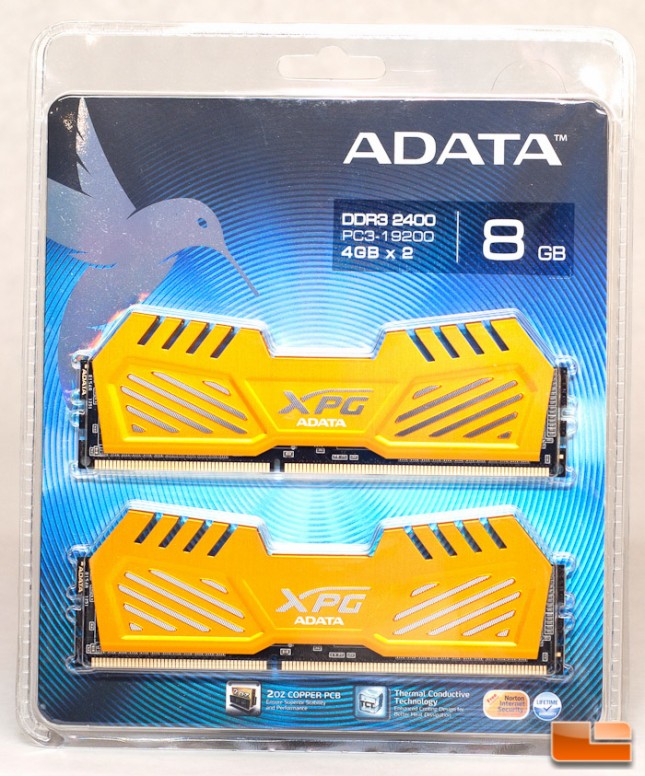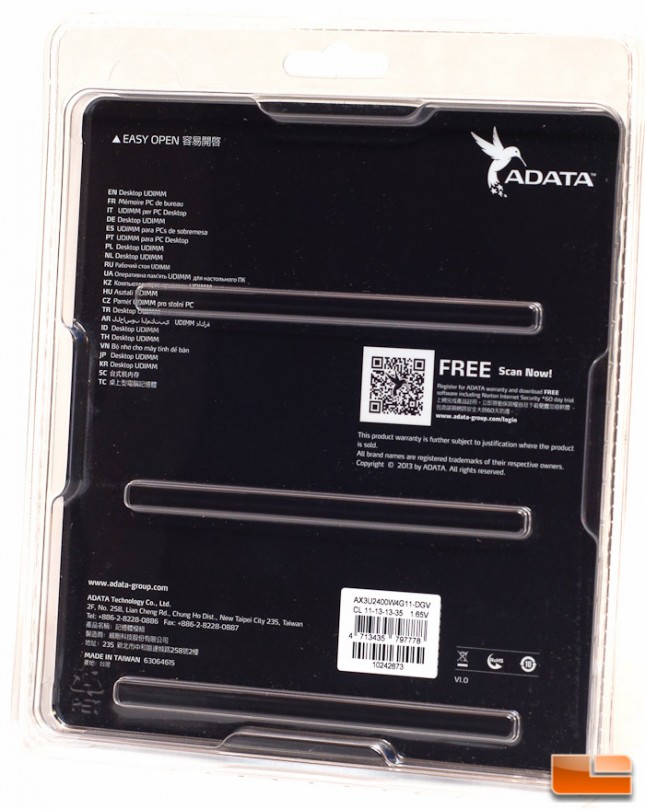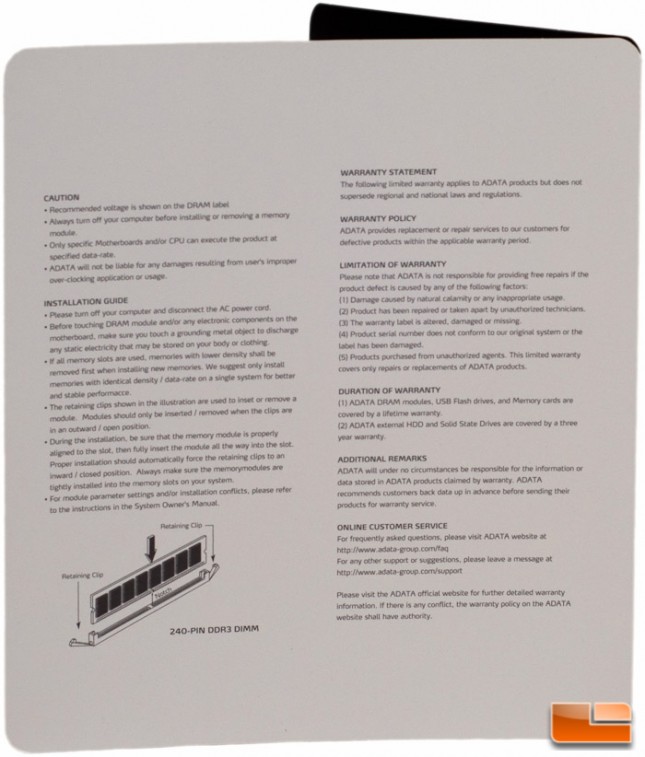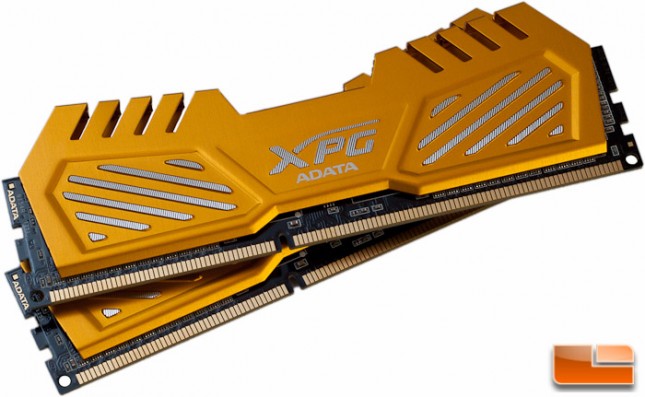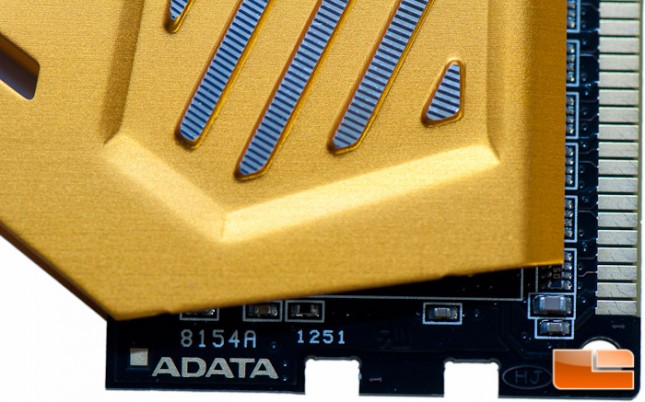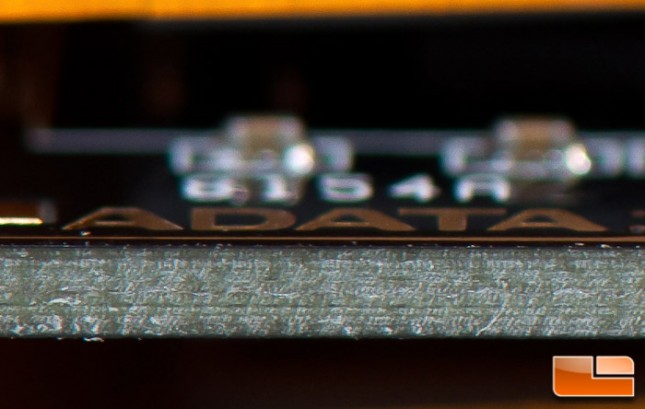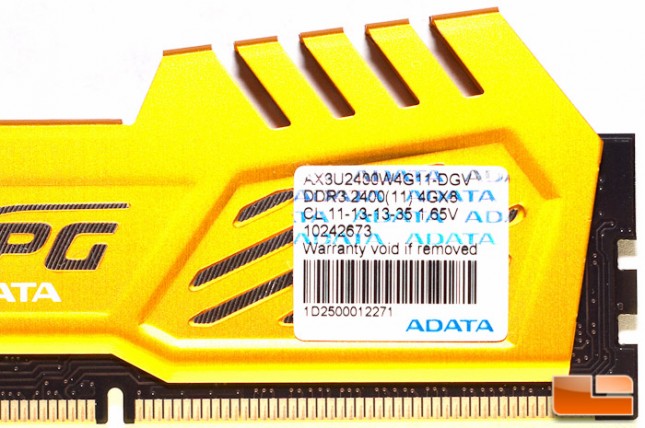ADATA XPG V2 Series 8GB DDR3 2400MHz Memory Kit Review
A Closer Look At ADATAs XPG V2 DRAM
The packaging that this memory kit came in was quite basic. It did the job of protecting the RAM modules and thats all it needed to do.
I tend to cringe when I see items packaged in this manner, just for the frustration on opening them, but fortunately ADATA made opening it up a breeze with the back that just zips right off. Just on the upper left is the point to easily open it up.
Once you open up the package, youll have to take out the paper insert. If you flip this insert open, youll find the instructions printed inside, which also gives you a nice breakdown of their warranty policy.
Taking a look at the modules themselves, you cant help but notice the large heat spreaders. With the heat spreader in place, these modules measure 43.5mm tall. Thats not overly tall, so it shouldn’t be an issue for most people with large aftermarket air coolers or water cooling loops. For reference, there are other memory modules out there that are quite a bit larger yet; like Corsair Dominator GTX tall, coming in at 64.3mm.
This kit came with gold colored aluminum heat spreaders, and I wasn’t too sure about the color at first. It is definitely different, but I think Ill like it in the end. Im always up for different colors and this one sure meets that category. Again, the other color is tungsten grey, which I feel will be a color that more people opt for.
The color of the PCB is a slick black, which I am really digging. The black and gold really go together quite well, but what doesn’t black go together well with?
When I take close-up shot of the side profile, you can begin to see the layering of the PCB.
Finally, here is a shot of the label thats used on the modules. This sticker gives you the model number (AX3U2400W4G11-DGV), the memory speed, and finally the timings at that speed at 1.65v. You will achieve the 2400MHz speeds via the single XMP (Intel Extreme Memory Profile). These modules are programmed at JEDEC standards, running at 1333MHz with 9-9-9-24 timings at 1.5v.
Next up lets take a quick peek at the test system, then get on to the benchmarking!

